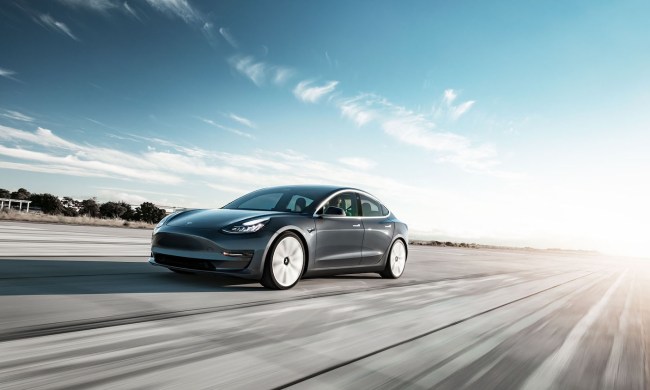The National Highway Traffic Safety Administration (NHTSA) is concerned that Tesla’s use of social media and its website makes false promises about the automaker’s full-self driving (FSD) software.
The warning dates back from May, but was made public in an email to Tesla released on November 8.
The NHTSA opened an investigation in October into 2.4 million Tesla vehicles equipped with the FSD software, following three reported collisions and a fatal crash. The investigation centers on FSD’s ability to perform in “relatively common” reduced visibility conditions, such as sun glare, fog, and airborne dust.
In these instances, it appears that “the driver may not be aware that he or she is responsible” to make appropriate operational selections, or “fully understand” the nuances of the system, NHTSA said.
Meanwhile, “Tesla’s X (Twitter) account has reposted or endorsed postings that exhibit disengaged driver behavior,” Gregory Magno, the NHTSA’s vehicle defects chief investigator, wrote to Tesla in an email.
The postings, which included reposted YouTube videos, may encourage viewers to see FSD-supervised as a “Robotaxi” instead of a partially automated, driver-assist system that requires “persistent attention and intermittent intervention by the driver,” Magno said.
In one of a number of Tesla posts on X, the social media platform owned by Tesla CEO Elon Musk, a driver was seen using FSD to reach a hospital while undergoing a heart attack. In another post, a driver said he had used FSD for a 50-minute ride home. Meanwhile, third-party comments on the posts promoted the advantages of using FSD while under the influence of alcohol or when tired, NHTSA said.
Tesla’s official website also promotes conflicting messaging on the capabilities of the FSD software, the regulator said.
NHTSA has requested that Tesla revisit its communications to ensure its messaging remains consistent with FSD’s approved instructions, namely that the software provides only a driver assist/support system requiring drivers to remain vigilant and maintain constant readiness to intervene in driving.
Tesla last month unveiled the Cybercab, an autonomous-driving EV with no steering wheel or pedals. The vehicle has been promoted as a robotaxi, a self-driving vehicle operated as part of a ride-paying service, such as the one already offered by Alphabet-owned Waymo.
But Tesla’s self-driving technology has remained under the scrutiny of regulators. FSD relies on multiple onboard cameras to feed machine-learning models that, in turn, help the car make decisions based on what it sees.
Meanwhile, Waymo’s technology relies on premapped roads, sensors, cameras, radar, and lidar (a laser-light radar), which might be very costly, but has met the approval of safety regulators.




